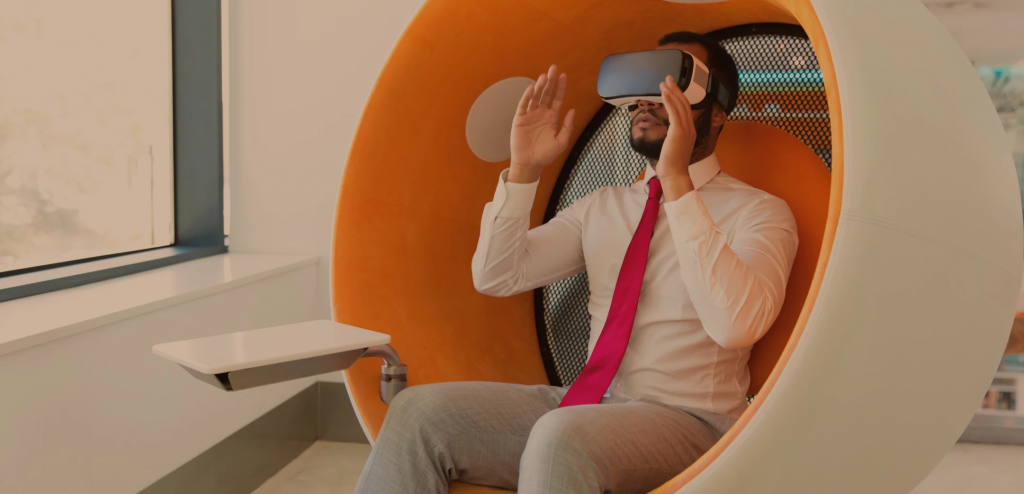Imagine walking into a store completely designed and customized for you, with detailed lighting and visual aesthetics complementing each piece of clothing you try on. Or being able to test how a new piece of furniture would look in your home before buying it. And the best thing is that there would be no shipping costs or delivery time, you could do everything from the comfort of your home – everything would be virtual.

The metaverse, a highly immersive virtual world that seemed a futuristic utopia, has left the pages of science fiction books and become a reality with a predicted $800 billion market opportunity by 2024, according to Bloomberg Intelligence.
While the internet is generally seen as a place to buy items or consume information, the Metaverse is all about experiences, taking part in activities such as games, social interaction, learning, training, and exploring virtual spaces. It is still in the early stages but we are beginning to see glimpses of the future and how it will look and feel to shop on web 3.0.
Its emergence, along with artificial intelligence, social commerce, augmented reality (AR) and virtual reality (VR), cryptocurrency, and Non-Fungible Tokens (NFTs), is already impacting brand strategies. For instance, several companies have launched AR and VR applications to help buyers test and shop their products, providing “phygital” experiences. This has led to some great results for brands like the e-commerce company eBay, which created an entire department store through Virtual Reality, where users can wear the glasses and visit the environment, customizing the products to meet their interests.
Some major companies have already begun capitalizing on Metaverse through advertised placements such as virtual billboards but also developing experiences. Coca-Cola, for example, launched the Coca-Cola Zero Sugar Byte. The product already existed in the virtual universe and the company decided to bring it also to the physical world in a limited edition. The cans offered Augmented Reality (AR) and gaming experiences.
Luxury brands are also taking advantage of this new trend and seem to have been the pioneers of marketing actions in the metaverse, especially for games. Balenciaga developed four virtual outfits that could wear avatars in the online game Fortnite. However, the company was not restricted to the virtual. The brand took the opportunity to launch a physical collection based on the game that included pieces such as hoodies and hats.
To enter the metaverse, in 2021 Nike announced the purchase of RTFKT, a company that manufactures digital sneakers using NFT (non-fungible tokens), blockchain authentication, and augmented reality. The goal was to be able to connect its physical sneakers to the digital versions. In addition, Nike has also launched its virtual world on the online video game platform Roblox, Nikeland.
Ralph Lauren has also created a digital environment within the Roblox platform. Named Winter Scape, the experience area features ice skating and allows visitors to buy clothes. The space had more than 1 million visitors.
It has been proven that these new technologies can be a very effective way to engage with customers. By leveraging the technology of the metaverse, especially the complete freedom from physical boundaries, businesses can extend their presence and engage with customers.
Due to the proliferation of these new shopping and payment experiences, and an active community of new entrants (especially Gen Z, that generally prefers digital shopping and digital experiences), the future of e-commerce presents a lot of possibilities but also a big challenge for businesses: How do you get your customers’ attention when they are being exposed to so many brands, products, and services and in so many devices, apps, and social media? This abundance of channels has created an ecosystem in which, to remain competitive, companies will have to be increasingly customer-centric and focused on hyper-personalization and customer experience.